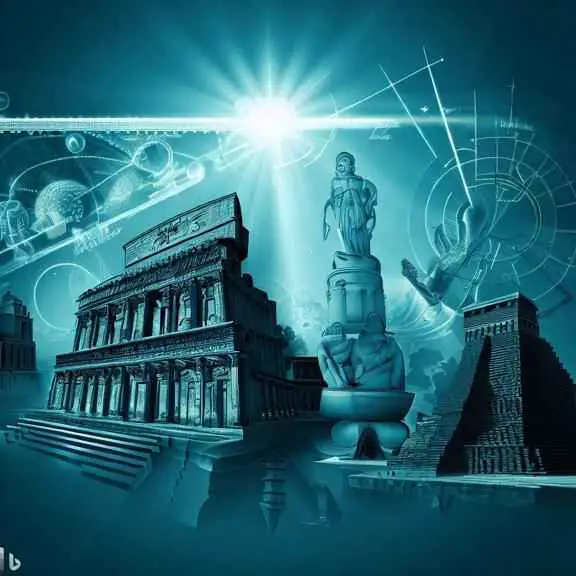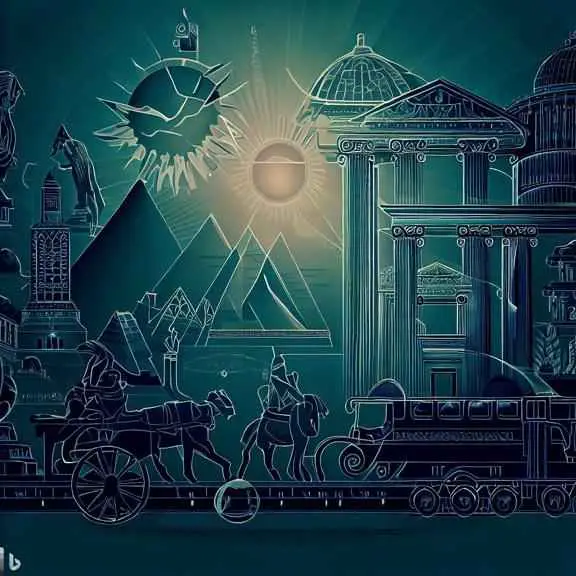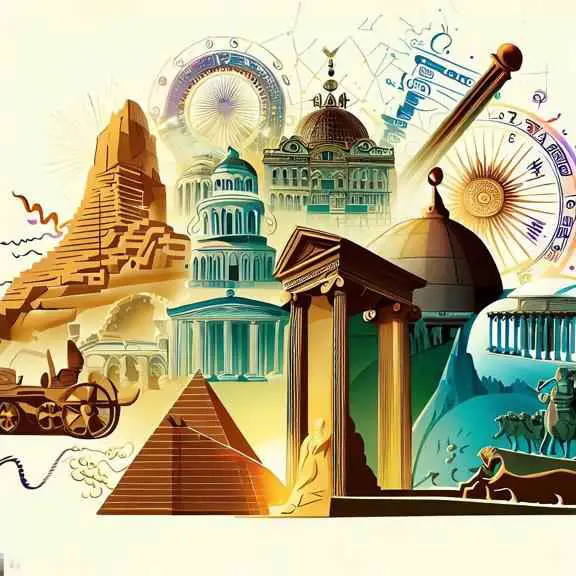Paragraph on
Wonders Of World Of Ancient Period
for all Class, Words
by History on
The Wonders of the World from the ancient period always captivate the imagination of people throughout centuries. The seven wonders of the…, please continue reading.

Table of Content
Ad
The Paragraph on Wonders Of World Of Ancient Period
Ad
The Wonders of the World from the ancient period always captivate the imagination of people throughout centuries. The seven wonders of the ancient world, as it is commonly known, were a collection of man-made marvels that were constructed during different time periods. Unfortunately, most of these structures no longer exist today, but their magnificence still echoes throughout history.
The Great Pyramid of Giza is the only wonder that still stands today, and it is often regarded as the greatest of them all. Pharaoh Khufu commissioned the construction of this pyramidal structure over 4,500 years ago, and it took more than two decades to complete. Its sheer size, precision, and placement in the desert make it a breathtaking sight to behold. The Hanging Gardens of Babylon, another of the ancient seven wonders, was an engineering feat that featured exotic plants cascading down a series of terraces. King Nebuchadnezzar II constructed this paradise in the desert to please his queen, Amytis, who missed the green hills of her homeland. The other wonders of the world include the Temple of Artemis at Ephesus, the Mausoleum at Halicarnassus, the Statue of Zeus at Olympia, the Colossus of Rhodes, and the Lighthouse of Alexandria.
These magnificent structures have amazed people for centuries and inspire us with their architectural ingenuity, cultural significance, and historical relevance. The ancient period was a time when people pushed the boundaries of knowledge, learned to harness the resources of the world, and transformed the landscape of their surroundings. Visiting these sites today can provide us with a glimpse of the past and an appreciation of the achievements of our forebears.

Questions about Wonders Of World Of Ancient Period
Ad
Some questions and answers:
- What are the ancient wonders of the world?
Answer: The ancient wonders of the world were a collection of man-made marvels that were constructed during different time periods.
- How many ancient wonders of the world still exist today?
Answer: Only one ancient wonder of the world, The Great Pyramid of Giza, still exists today.
- Which King commissioned the construction of the Hanging Gardens of Babylon?
Answer: King Nebuchadnezzar II commissioned the construction of the Hanging Gardens of Babylon.
- What were the Hanging Gardens of Babylon used for?
Answer: The Hanging Gardens of Babylon were constructed to please King Nebuchadnezzar II’s queen who missed her homeland’s green hills.
- What was the Temple of Artemis at Ephesus?
Answer: The Temple of Artemis at Ephesus was an ancient Greek temple dedicated to Artemis, the goddess of hunt.
- What was the Colossus of Rhodes?
Answer: The Colossus of Rhodes was a statue of the Greek sun-god Helios, erected in the city of Rhodes.
- Why were the ancient wonders of the world important?
Answer: The ancient wonders of the world were important as they inspired people with their architectural ingenuity, cultural significance, and historical relevance.
- Who commissioned the construction of the Great Pyramid of Giza?
Answer: Pharaoh Khufu commissioned the construction of the Great Pyramid of Giza.
- How long did it take to build the Great Pyramid of Giza?
Answer: It took more than two decades to complete the construction of the Great Pyramid of Giza.
- Why did people from the ancient period construct these wonders of the world?
Answer: People from the ancient period constructed the wonders of the world to push the boundaries of knowledge, learn to harness the resources of the world, and transform the landscape of their surroundings.

Vocabulary related to Wonders Of World Of Ancient Period
Ad
Vocabulary words:
- Man-made - made or caused by human beings (e.g., man-made wonders of the world)
- Marvels - something that causes wonder or astonishment (e.g., man-made marvels that were constructed during different time periods)
- Pharaoh - a ruler of ancient Egypt (e.g., Pharaoh Khufu commissioned the construction of the Great Pyramid of Giza)
- Pyramidal - shaped like a pyramid (e.g., the Great Pyramid of Giza is a pyramidal structure)
- Monuments - a structure built as a memorial to a person, event, or idea (e.g., ancient wonders of the world are man-made monuments)
- Cascading - falling or flowing like a waterfall (e.g., the Hanging Gardens of Babylon featured exotic plants cascading down a series of terraces)
- Terraces - a level paved area or platform used for outdoor sitting or dining (e.g., the Hanging Gardens of Babylon consisted of series of terraces)
- Ingenuity - the quality of being clever, original, and inventive (e.g., the ancient wonders of the world inspire us with their architectural ingenuity)
- Cultural significance - the importance of something to people’s culture (e.g., the ancient wonders of the world have a cultural significance)
- Engineering - the branch of science and technology concerned with the design, building, and use of engines, machines, and structures (e.g., the Hanging Gardens of Babylon was an engineering feat)
- Colossus - a statue that is much larger than life-size (e.g., the Colossus of Rhodes was a statue of the Greek sun-god Helios)
- Magnificent - impressively beautiful, elaborate or extravagant (e.g., the Great Pyramid of Giza is a magnificent ancient wonder of the world)
- Relevance - the quality or state of being closely connected or appropriate (e.g., the ancient wonders of the world have a historical relevance)
- Appreciation - recognition and enjoyment of the good qualities of something (e.g., visiting the ancient wonders of the world can provide us with an appreciation of our forebears’ achievements)
- Captivate - to attract and hold the interest and attention of someone (e.g., the Wonders of the World from the ancient period always captivate the imagination of people throughout centuries).

Structure of the sample "Wonders Of World Of Ancient Period" paragraph
Ad
Explanation of Coherence and Cohesion:
The paragraph is coherent as it uses a clear and logical structure to present information about the wonders of the world from the ancient period. The paragraph begins by introducing the topic and providing the reader with some context. It then goes on to explain what the ancient wonders of the world were and how many still exist today. The paragraph further goes on to describe each of the ancient wonders of the world, providing relevant details and historical insights. Finally, the paragraph concludes by emphasizing the importance of these structures for human history and cultural heritage.
The paragraph is cohesive as it uses language features such as transitional phrases, linking words, and repetition to help signal the relationships between ideas and promote clarity and consistency. For example, words such as “another,” “it,” “the other wonders of the world,” and “these magnificent structures” are used to signal the transition between ideas and connect different points of information. Additionally, repetition of phrases such as “ancient period,” “man-made marvels,” and “wonders of the world” help to reinforce the central theme and provide a sense of unity to the paragraph.
